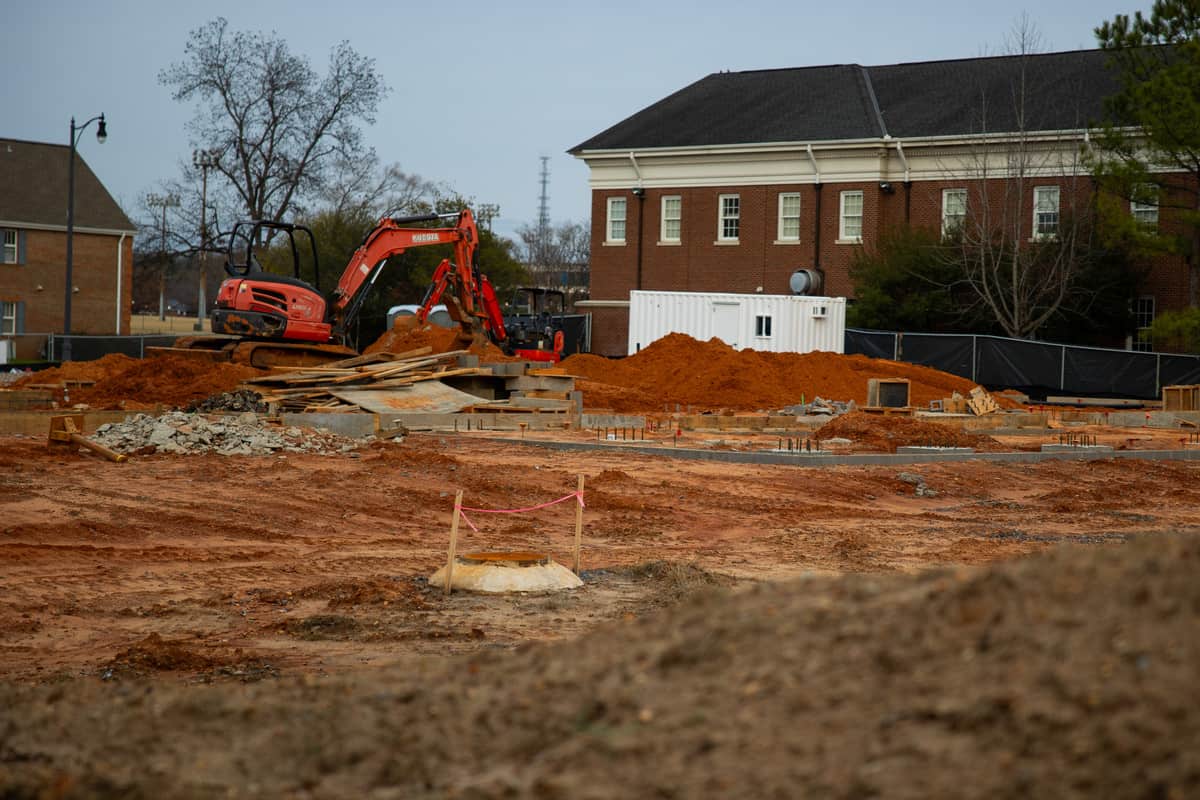It does not take long to notice the imbalance that exists between the different colleges on the University’s campus. Walk from the Shelby Quad to B.B. Comer, or from ten Hoor to the neighboring Hewson Hall. Despite the shared architectural design elements, the contrast between these buildings is stark.
Where the engineering and business buildings boast beautiful modern interiors and exteriors, the College of Arts and Sciences hosts classes in older facilities whose upkeep and appearance is apparently far lower on the administration’s list of priorities.
Anyone who has had class in ten Hoor, home for political science majors like me, has heard rumors of asbestos, sat in a dimly lit classroom with a peculiar smell, and struggled to locate a convenient outlet for charging their laptop. This is a far cry from the experience a hall like Hewson offers, where business students enjoy a breathable open floor plan with a plethora of accommodating study spaces and classrooms built for modern education (not to mention a conveniently located Java City coffee shop).
And of course these dichotomies are not experienced by students alone. Professors in different departments must also adapt to teach in their given environment — whether that is in a cramped classroom with a malfunctioning projector and a broken thermostat or in a state-of-the-art facility with plentiful accommodations.
The truth is, every university will have its strengths and weaknesses — especially one like the Capstone with almost 40,000 students pursuing a diverse breadth of degrees. It is unrealistic to expect that every campus facility will be outfitted with modern amenities and updated architecture. However, we can be realistic while simultaneously acknowledging that faculty and students in every department have an equal right to work and study in the best environments the University can provide.
Unfortunately, a look at the University’s current and planned building projects reveals an imbalance in infrastructural development that appears to prioritize Greek life housing, athletic facilities, and more general-purpose projects like Student Center renovations, the University Club restoration, and a new Alumni Hall.
Certainly, it can be no easy task to decide where and when funds should be appropriated for such a large and diverse campus that only continues to grow. Even still, the University must offer better support to colleges and departments that have clearly been in need of greater resources for some time.
The Capstone pulled in over $946 million in the 2022 fiscal year, and that number only increases as more students pay more and more in tuition. The least the University can do is make a stronger commitment to ensuring that all students and faculty benefit from the investments made with that income, and receive those benefits equitably.
The present lack of such equity is further exposed by an examination of educator salaries across departments. A College of Business professor makes over double the annual income of a humanities professor. An Honors College instructor makes less than the average Alabamian’s salary while nursing, business and law faculty members make close to $100,000 a year on average. The pay for our educators varies greatly by field.
Even if you find uneven investment into facility upkeep and development to be a somewhat superficial inequality, there is no arguing that these gaps in departmental pay reveal objectively uneven priorities in the University’s distribution of resources.
I am under no illusion that the different disciplines found on campus all need the exact same amount of investment to accomplish their educational missions. The hard sciences often require costly lab equipment the social sciences and humanities do not, and larger departments surely require bigger buildings that will cost more to build and maintain.
However, I do believe that if credit hours cost the same amount for all students across all fields, then they deserve to experience similar levels of high-quality education. That includes being instructed by competitively compensated educators in good, well-maintained learning environments, regardless of your chosen major.
Going forward, it would be great to see the University administration make a formal commitment to a more even distribution of resources across campus in order to ensure that no college or department feels underserved or left behind.
Even better would be more democratic involvement of students and faculty in the decision-making process for things like building renovations. I know that there is already a thorough process that goes into making such administrative decisions, but holding public forums or more frequently surveying students and faculty to gauge what projects they consider the most important would go a long way to making more people feel that their voices are being heard.
With regard to faculty pay, we need both more transparency and greater equity. It is extremely valuable to have faculty salaries public, but even more helpful would be explicit rationales behind the pay gaps these salaries reveal. The University has an obligation to both its faculty and its students to explain why one educational discipline is valued differently from another.
If a finance professor’s wages need to be higher due to greater competition with the private sector job market, then so be it, but a humanities professor’s labor shouldn’t be valued any less just because they may have fewer extra-academic job prospects. All instructors deserve to be fairly compensated because they are all expected to help provide an education worth the student’s price of admission.









